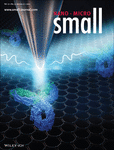Journal list menu
Export Citations
Download PDFs
Cover Picture
THz Near-Field Imaging: Near-Field Nanoscopic Terahertz Imaging of Single Proteins (Small 3/2021)
- First Published: 20 January 2021
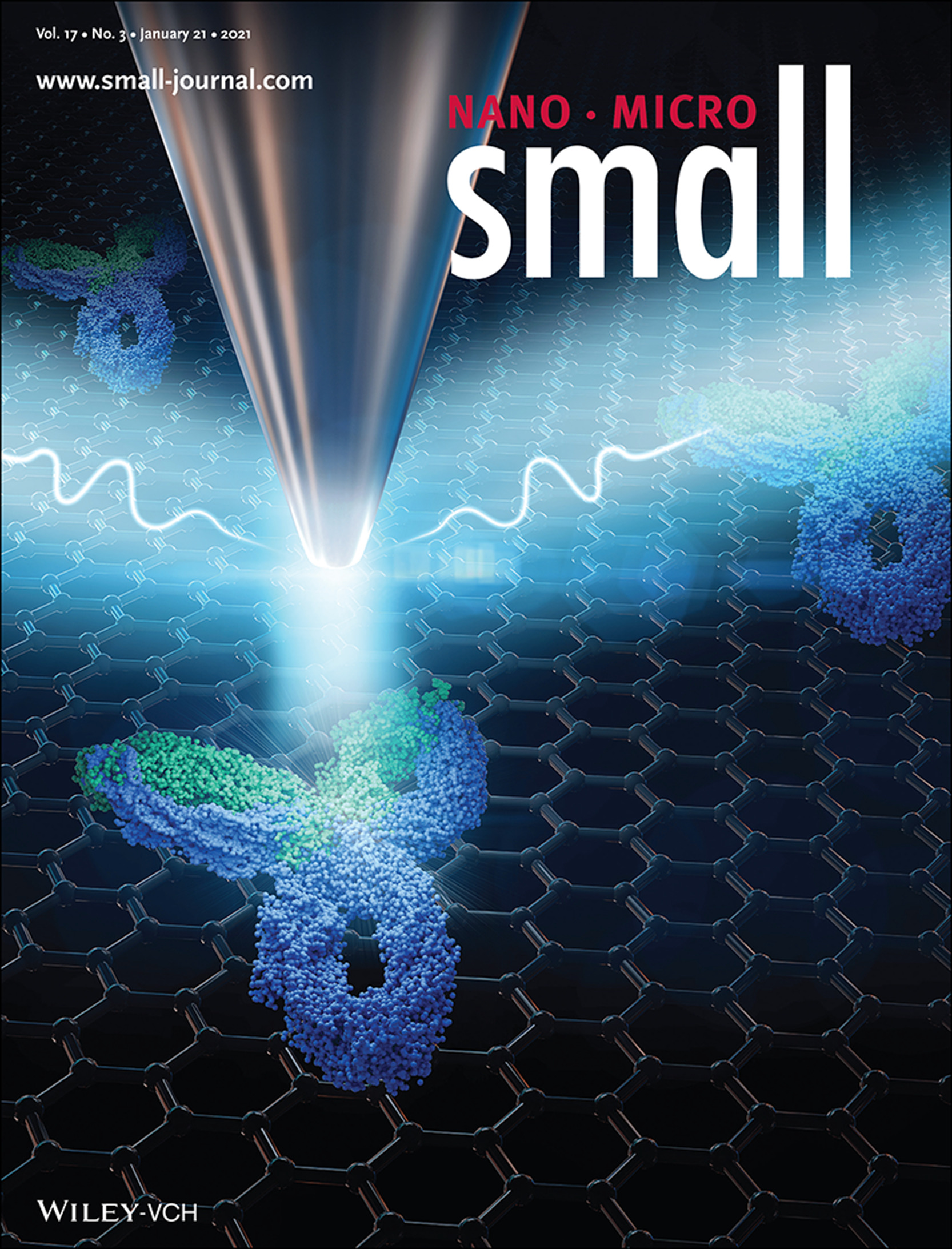
In article number 2005814, Jiang Li, Huabin Wang, and co-workers demonstrate the imaging of single protein molecules with a scattering-type terahertz (THz) scanning near-field optical microscope, taking advantage of a graphene substrate with high THz reflectivity and atomic smoothness, and a long platinum probe with high scattering ability. This strategy opens new routes to imaging single biomolecules with THz techniques.
Inside Front Cover
Droplet Manipulations: Nonspecular Reflection of Droplets (Small 3/2021)
- First Published: 20 January 2021
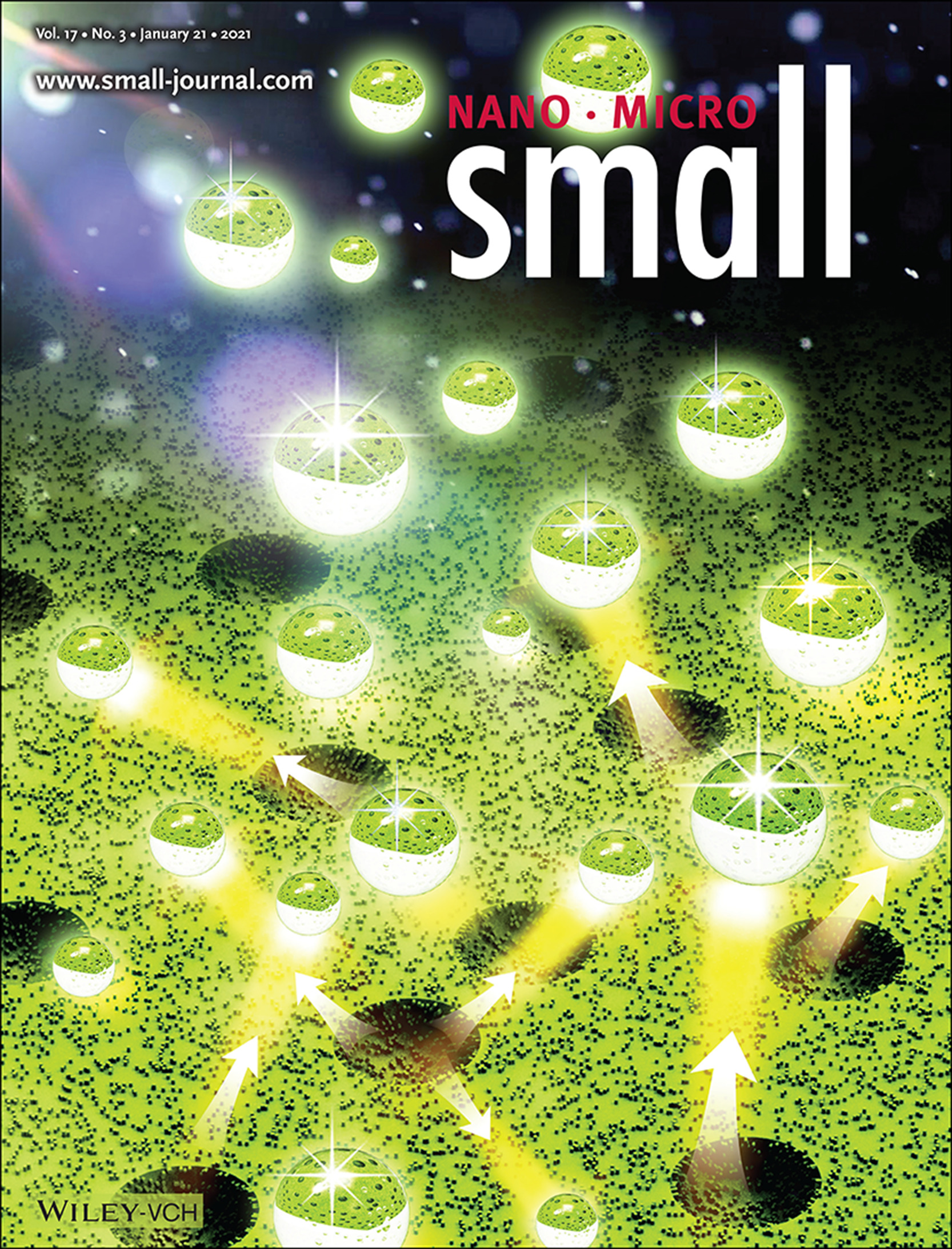
Dimples can break all symmetries in the law of reflection and make the bouncing of droplets on super-repellent surfaces non-specular, reported by Liqiu Wang and co-workers (article number 2006695), and thus functioning as a “magic” hand to enable various on-demand droplet manipulations including trapping, shedding, antigravitational transporting, targeted positioning, and coalescing.
Inside Back Cover
Quantum Rods: Thermally Stable Quantum Rods, Covering Full Visible Range for Display and Lighting Application (Small 3/2021)
- First Published: 20 January 2021
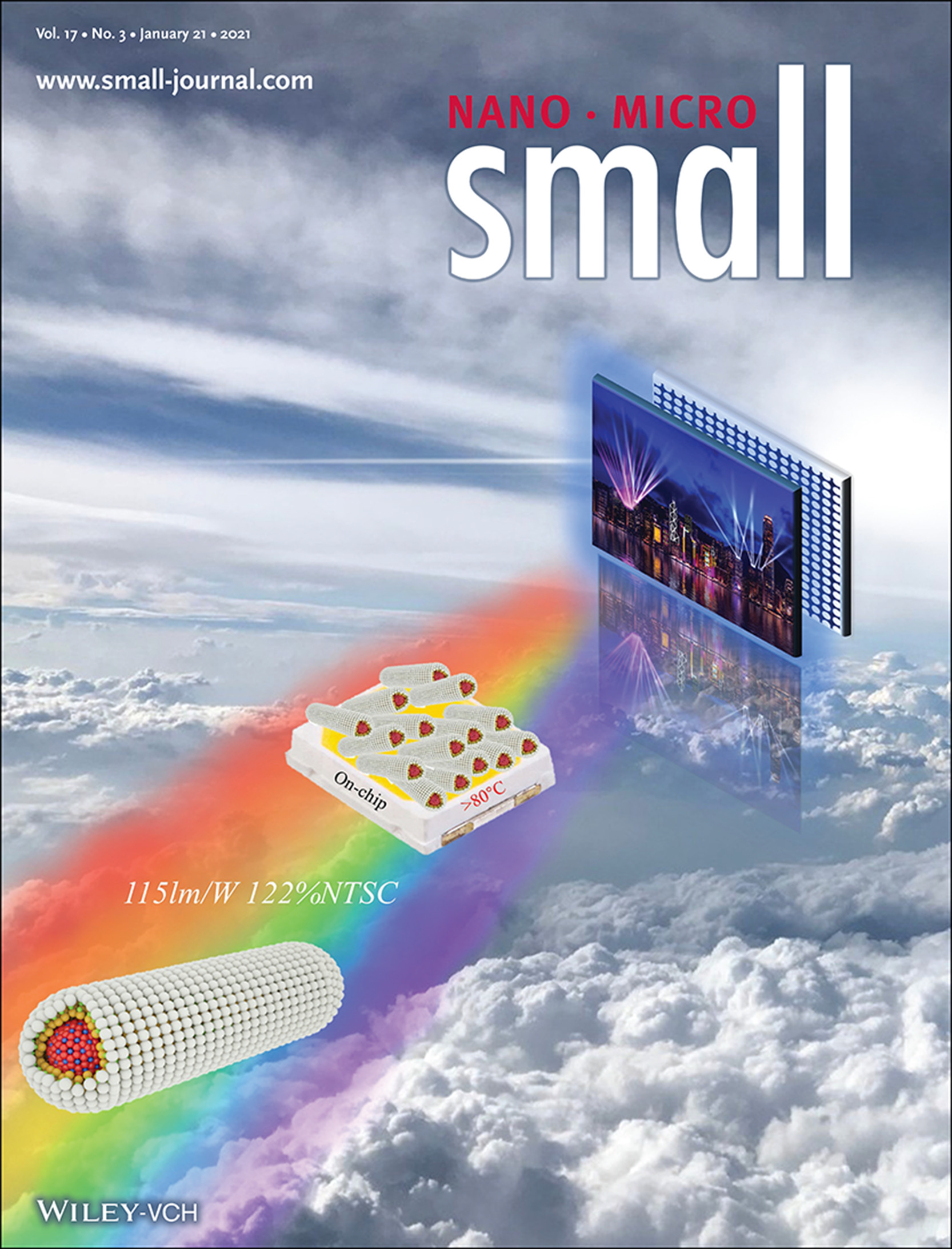
In article number 2004487, Abhishek K. Srivastava and co-workers report the synthesis of quantum rods with a narrow thermally stable luminescence covering the whole visible range by replacing Cd with Zn in one-pot post-synthetic development. The quantum rods show high performance in the on-chip LED configuration covering 122% NTSC in 1931CIE color space with a record-high luminous efficacy of 115 lm W−1 among the wide color gamut white LEDs.
Back Cover
Single-Molecule Electronics: Single-Molecule Conductance of a π-Hybridized Tripodal Anchor while Maintaining Electronic Communication (Small 3/2021)
- First Published: 20 January 2021
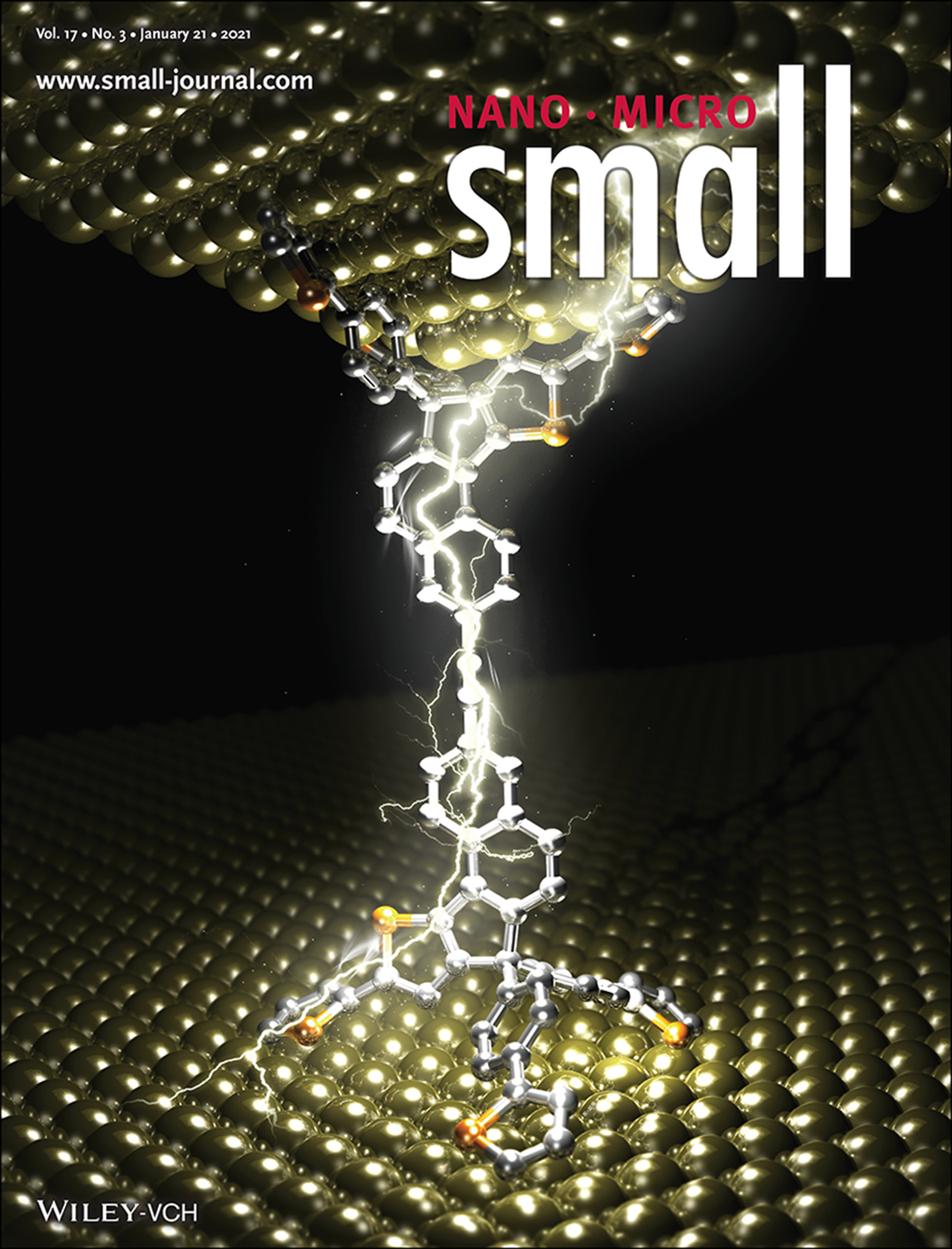
In article number 2006709, Tatsuhiko Ohto, Ryo Yamada, Hirokazu Tada, Yoshio Aso, Yutaka Ie, and co-workers report a tripodal anchor that maintains p-conjugation through an electrode, anchor, and molecular backbone. Single-molecular conductance measurements and theoretical calculations reveal that this tripodal anchor molecule shows improved electrical conductance.
Masthead
Correction
Reviews
Micro- and Nano-Devices for Studying Subcellular Biology
- First Published: 20 December 2020
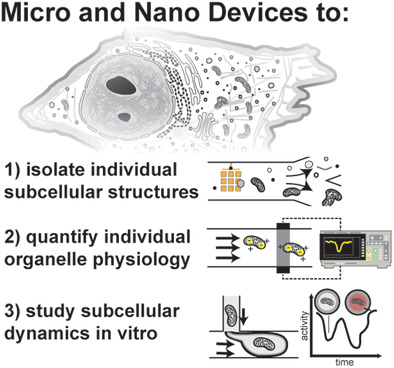
Next generation technologies capable of analyzing individual organelles are required to advance the understanding of how subcellular biology produces cell-level behaviors. This review describes emerging nanofluidic, microfluidic, and microelectronic approaches that offer the potential to overcome the technological hurdle of measuring large numbers of dynamic, microscale biological structures and thus provide insight into fundamental and clinically relevant biological questions.
Macromolecular Design of Lithium Conductive Polymer as Electrolyte for Solid-State Lithium Batteries
- First Published: 21 December 2020
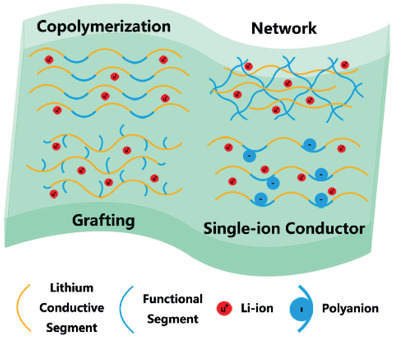
In this review, the latest researches on solid polymer electrolyte (SPE) are summarized in views of macromolecular design. First, lithium conducting groups are presented. Then, macromolecular design methods including copolymerization, network, grafting, and single-ion conductor are highlighted. Moreover, synergistic effects between designed matrix, lithium salt, and fillers are reviewed. At last, principles of macromolecular design for SPE are concluded.
Recent Progress and Challenges in the Optimization of Electrode Materials for Rechargeable Magnesium Batteries
- First Published: 23 December 2020
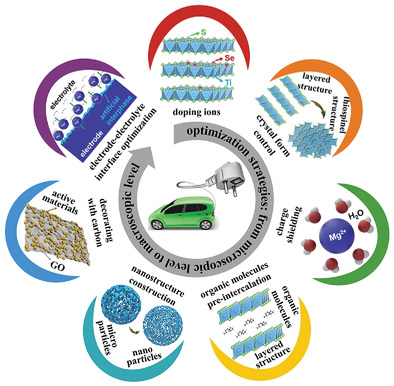
Optimization strategies are of great importance for the development of high-performance rechargeable magnesium battery electrode materials. From the atomic level to the macroscopic level, this review presents seven representative modification strategies and a number of application examples. It provides effective guidelines for the improvement of battery performance through the utilization of a single strategy or the combination of multiple strategies.
Communications
Near-Field Nanoscopic Terahertz Imaging of Single Proteins
- First Published: 11 December 2020
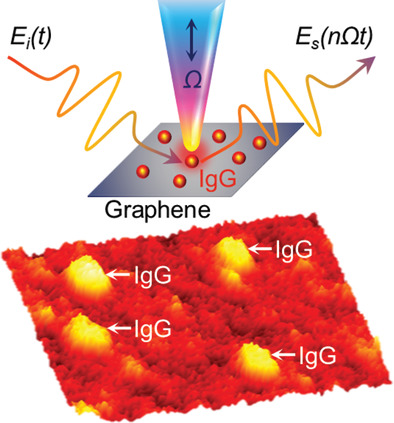
Terahertz (THz) imaging has promising biomedical applications, but its application in single biomolecule detection remains challenging. Herein, by taking the advantages of high THz reflectivity and atomic smoothness of graphene and the high scattering cross-section of long Pt probe, single IgG protein molecules are unambiguously imaged with a state-of-the-art THz scattering-type scanning near-field optical microscope.
Nonspecular Reflection of Droplets
- First Published: 21 December 2020
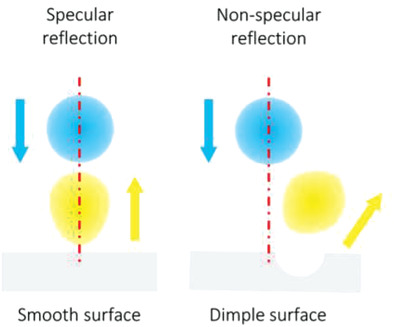
Nonspecular reflection of droplet impingement is reported on superhydrophobic surfaces with a millimetric dimple for energy-efficient, omnidirectional droplet transport. The droplet is self-propelled in virtually any direction by taking advantage of its initial kinetic energy. Versatile droplet manipulation is demonstrated, such as trapping, shedding, antigravity transport, targeted positioning, and on-demand coalescence of droplets.
Regulating Catalytic Activity of DNA-Templated Silver Nanoclusters Based on their Differential Interactions with DNA Structures and Stimuli-Responsive Structural Transition
- First Published: 22 December 2020

To surmount the “always-on” limitation, controllability of artificial nanocatalysts should be taken into account seriously, which is significant in the field of biomedicine. Based on distinct inhibition effects of DNA secondary structures, catalytic activity of DNA-AgNCs can be regulated reversibly via DNA input-driven transition between duplex and triplex structures, meanwhile, yielding two facile biosensing approaches for nucleic acid detection.
Mechanical Processing of Naturally Bent Organic Crystalline Microoptical Waveguides and Junctions
- First Published: 23 December 2020
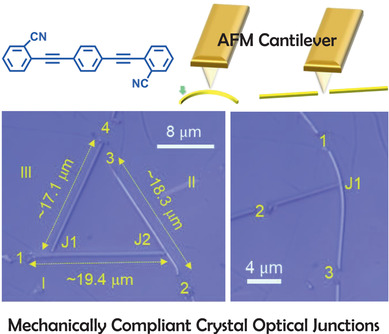
Precise mechanical processing of crystalline optical waveguides is essential for the construction of advanced photonic junctions and circuits. The vapor-phase growth technique generates naturally bent crystalline waveguides and networks on a glass surface. Micromechanical cutting of these networks at well-defined positions using atomic force microscopy cantilever produces T- and Δ-shaped optical junctions with multiple optical outputs.
Simultaneously Passivating Cation and Anion Defects in Metal Halide Perovskite Solar Cells Using a Zwitterionic Amino Acid Additive
- First Published: 23 December 2020
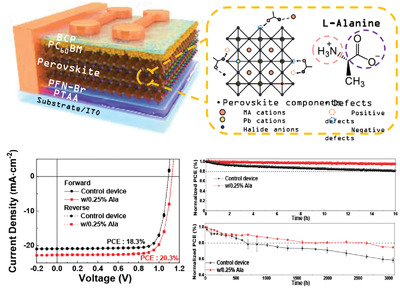
A novel strategy to neutralize charged point defects in organic-inorganic hybrid perovskite materials is proposed for highly efficient and stable perovskite solar cells by using a zwitterionic L-alanine additive, which can be passivated simultaneously with both positively and negatively charged defects because it contains both anion and cation functional groups in one molecule.
Full Papers
Thermally Stable Quantum Rods, Covering Full Visible Range for Display and Lighting Application
- First Published: 20 December 2020

Quantum rods with a narrow thermally stable luminescence tuned in the whole visible range are prepared by replacing Cd with Zn in a one-pot post-synthetic development. The quantum rods show high performance in the on-chip LED configuration covering 122% NTSC in 1931CIE color space with a record-high luminous efficacy of 115 lm W−1 among the wide color gamut white LEDs.
Single-Molecule Conductance of a π-Hybridized Tripodal Anchor while Maintaining Electronic Communication
- First Published: 18 December 2020
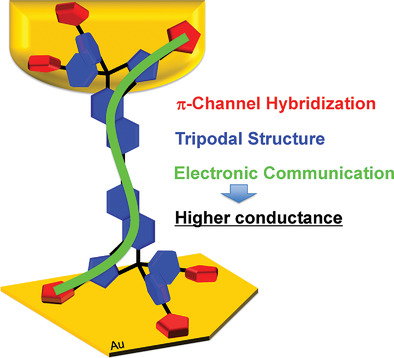
A tripodal anchor that maintains π-conjugation through an electrode, anchor, and molecular backbone is developed. Single-molecular electrical conductance measurements demonstrate that this tripodal anchor molecule shows improved electrical conductance. The vector-based classification of the measured I–V curves together with first-principles transport calculations reveal the transport properties of the tripodal-anchored junction structures.
An Acoustic Platform for Single-Cell, High-Throughput Measurements of the Viscoelastic Properties of Cells
- First Published: 16 December 2020
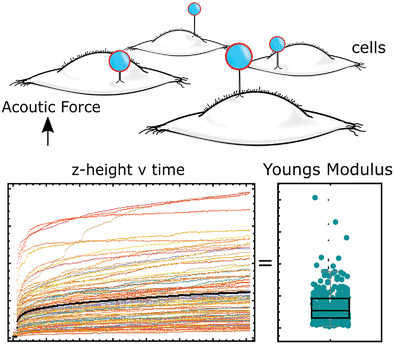
Acoustic force spectroscopy is utilized to demonstrate high-throughput characterization of the viscoelastic properties of adherent cells. Elasticity and fluidity measurements are resolved at the single-cell level as a function of temperature, pharmacological treatments, and protein expression levels.
Yolk−Shell Nano ZnO@Co-Doped NiO with Efficient Polarization Adsorption and Catalysis Performance for Superior Lithium−Sulfur Batteries
- First Published: 22 December 2020
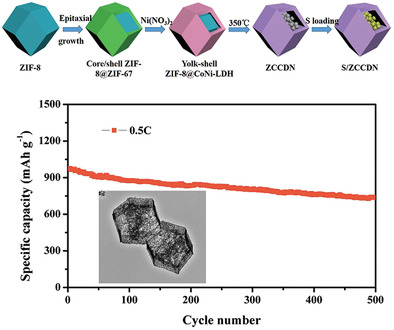
The novel structure composed of ZnO nanoparticles confined in Co-doped NiO polyhedron is for the first time synthesized by new strategy of “self-termination of ion exchange.” This material shows outstanding cyclic stability with 738.56 mAh g−1 remained after 500 cycles at 0.5 C and low decay rate of only 0.048% per cycle due to efficient polarization adsorption and catalysis ability.
Highly Efficient InGaN Nanorods Photoelectrode by Constructing Z-scheme Charge Transfer System for Unbiased Water Splitting
- First Published: 22 December 2020

An unbiased Z-scheme InGaN nanorods/Cu2O nanoparticles heterostructured system is successfully constructed and fully investigated. The boosted interfacial charge transfer in the heterojunction via the recombination of the photoextracted electron of InGaN nanorods and the holes of Cu2O enables InGaN/Cu2O an enhanced photocurrent density of ≈170 µA cm−2 at zero potential and significantly improved stability.
pH-Dependent Morphology Control of Cellulose Nanofiber/Graphene Oxide Cryogels
- First Published: 22 December 2020
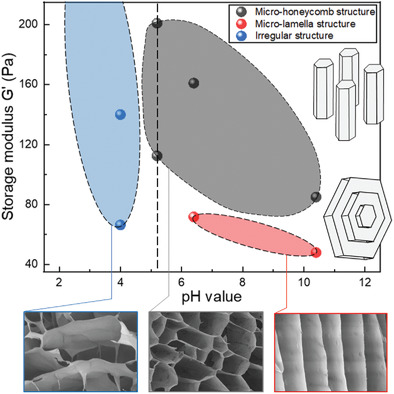
Unidirectional freeze-drying of binary sols containing cellulose nanofibers and graphene oxide yields irregular, micro-honeycomb, and micro-lamella structures when the sols’ pH is 4.0, 5.2, and neutral/10.4, respectively. This is found to come from the change of the surface charge conditions of the dispersants upon pH adjustment, which in turn alters the ice growth pattern from the altered intra-/inter particle interactions.
Linker Defects Triggering Boosted Oxygen Reduction Activity of Co/Zn-ZIF Nanosheet Arrays for Rechargeable Zn–Air batteries
- First Published: 23 December 2020
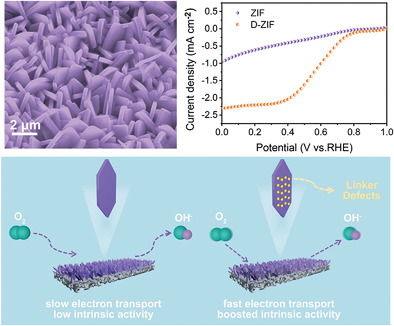
The introduction of linker-defect can effectively enhance the ORR activity of ZIF which is conducive to form unsaturated metal sites as activity center, resulting in increasing the intrinsic activity of metal sites and electrical conductivity. Such ZIF with imidazole molecules defects (D-ZIF) exhibits a superior ORR activity than the pristine ZIF.
Research Articles
Molecular Radiative Energy Shifts under Strong Oscillating Fields
- First Published: 23 December 2020
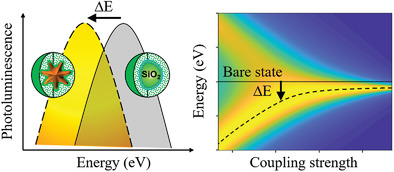
This study presents discovery and mechanistic elucidation of the plasmonic Stark effect. As opposed to the transient optical Stark effect achieved under intense laser pumping, the plasmonic Stark effect renders permanent energy-level modification with the in-built plasmonic field. This discovery paves the way for advanced optoelectronic tools such as ultrafast all-optical switches and biological nanoprobes using lower excitation energies.




